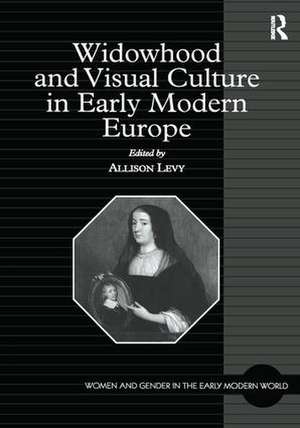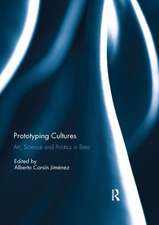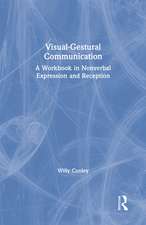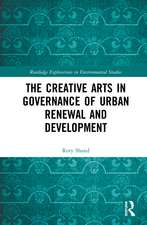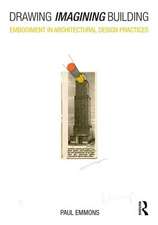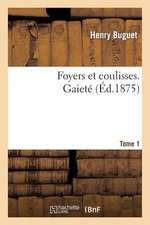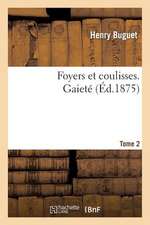Widowhood and Visual Culture in Early Modern Europe: Women and Gender in the Early Modern World
Editat de Allison Levyen Limba Engleză Paperback – 14 iun 2017
Din seria Women and Gender in the Early Modern World
- 9%
 Preț: 1003.31 lei
Preț: 1003.31 lei -
 Preț: 289.10 lei
Preț: 289.10 lei - 19%
 Preț: 364.64 lei
Preț: 364.64 lei - 8%
 Preț: 383.57 lei
Preț: 383.57 lei - 9%
 Preț: 936.16 lei
Preț: 936.16 lei -
 Preț: 223.84 lei
Preț: 223.84 lei - 9%
 Preț: 934.94 lei
Preț: 934.94 lei - 18%
 Preț: 1054.71 lei
Preț: 1054.71 lei - 18%
 Preț: 1000.27 lei
Preț: 1000.27 lei - 18%
 Preț: 1054.71 lei
Preț: 1054.71 lei - 18%
 Preț: 1057.09 lei
Preț: 1057.09 lei - 18%
 Preț: 1000.27 lei
Preț: 1000.27 lei - 25%
 Preț: 497.08 lei
Preț: 497.08 lei - 18%
 Preț: 1000.27 lei
Preț: 1000.27 lei -
 Preț: 369.73 lei
Preț: 369.73 lei - 18%
 Preț: 1056.63 lei
Preț: 1056.63 lei - 25%
 Preț: 826.01 lei
Preț: 826.01 lei - 25%
 Preț: 768.30 lei
Preț: 768.30 lei - 18%
 Preț: 1053.92 lei
Preț: 1053.92 lei - 26%
 Preț: 764.20 lei
Preț: 764.20 lei - 26%
 Preț: 764.20 lei
Preț: 764.20 lei - 18%
 Preț: 1001.84 lei
Preț: 1001.84 lei - 26%
 Preț: 819.48 lei
Preț: 819.48 lei - 18%
 Preț: 1113.12 lei
Preț: 1113.12 lei -
 Preț: 369.73 lei
Preț: 369.73 lei - 16%
 Preț: 234.90 lei
Preț: 234.90 lei - 18%
 Preț: 1061.81 lei
Preț: 1061.81 lei - 25%
 Preț: 766.85 lei
Preț: 766.85 lei - 18%
 Preț: 1060.25 lei
Preț: 1060.25 lei - 26%
 Preț: 734.75 lei
Preț: 734.75 lei - 18%
 Preț: 1061.81 lei
Preț: 1061.81 lei - 25%
 Preț: 767.07 lei
Preț: 767.07 lei - 25%
 Preț: 769.92 lei
Preț: 769.92 lei - 18%
 Preț: 1057.09 lei
Preț: 1057.09 lei - 18%
 Preț: 1061.06 lei
Preț: 1061.06 lei - 26%
 Preț: 878.57 lei
Preț: 878.57 lei - 18%
 Preț: 1064.70 lei
Preț: 1064.70 lei - 18%
 Preț: 1107.61 lei
Preț: 1107.61 lei - 26%
 Preț: 736.38 lei
Preț: 736.38 lei - 18%
 Preț: 1068.15 lei
Preț: 1068.15 lei - 18%
 Preț: 1061.06 lei
Preț: 1061.06 lei - 18%
 Preț: 992.05 lei
Preț: 992.05 lei - 26%
 Preț: 819.84 lei
Preț: 819.84 lei - 18%
 Preț: 1109.18 lei
Preț: 1109.18 lei - 26%
 Preț: 821.53 lei
Preț: 821.53 lei - 18%
 Preț: 1000.27 lei
Preț: 1000.27 lei - 25%
 Preț: 827.76 lei
Preț: 827.76 lei
Preț: 299.52 lei
Preț vechi: 341.55 lei
-12% Nou
Puncte Express: 449
Preț estimativ în valută:
57.33€ • 59.62$ • 48.04£
57.33€ • 59.62$ • 48.04£
Carte tipărită la comandă
Livrare economică 13-27 martie
Preluare comenzi: 021 569.72.76
Specificații
ISBN-13: 9781138256576
ISBN-10: 1138256579
Pagini: 284
Dimensiuni: 152 x 229 mm
Greutate: 0.45 kg
Ediția:1
Editura: Taylor & Francis
Colecția Routledge
Seria Women and Gender in the Early Modern World
Locul publicării:Oxford, United Kingdom
ISBN-10: 1138256579
Pagini: 284
Dimensiuni: 152 x 229 mm
Greutate: 0.45 kg
Ediția:1
Editura: Taylor & Francis
Colecția Routledge
Seria Women and Gender in the Early Modern World
Locul publicării:Oxford, United Kingdom
Cuprins
Contents: Widow's peek: Looking at ritual and representation, Allison Levy; Representing widowhood: mourning models: 'Widowhood was the time of her greatest perfection': Ideals of widowhood and sanctity in Florentine art, Catherine Lawless; Memento Mori: Death, widowhood and remembering in early modern England, J. S. W. Helt; Mourning widows: Portraits of widows and widowhood in funeral sermons from Brunswick-Wolfenbuettel, Marina Arnold; Re-presenting widowhood: fashionable choices: Casting her widowhood: Contemporary and posthumous portraits of Caterina Sforza, Joyce de Vries; A widow's tears, a Queen's ambition: The variable history of Marie de Médicis's bereavement; Elizabeth McCartney; Conceptualizing the Kaiserinwitwe: Empress Maria Theresia and her portraits, Michael E. Yonan; Widowhood and representation: building memories: Individual fame and family honor: The tomb of Dogaressa Agnese da Mosto Venier, Holly S. Hurlburt; Margaret of Austria and the encoding of power in patronage: The Funerary Foundation at Brou, Laura D. Gelfand; A widow building in Elizabethan England: Bess of Hardwick at Hardwick Hall, Sara French; Constructing convents in 16th-century Castile: Toledan widows and patterns of patronage, Stephanie Fink De Backer; Widowhood and re-presentation: constructing histories: Trecento Rome: The poetics and politics of widowhood, Cristelle L. Baskins; Framing widows: Mourning, gender and portraiture in early modern Florence, Allison Levy; Contested narratives: Elisabeth of Austria and a relic of St Leopold, Amelia Carr; Afterword: Last rites: mourning identities (?), Allison Levy; Index.
Recenzii
Prize: Winner of the Society for the Study of Early Modern Women Award for a collaborative project published in 2003.
'These essays by promising young scholars open new angles of vision on the experiences and representations of widowhood in early modern culture. The collection is distinguished not only by its impressive chronological and geographical range; it also shows how little-known images and neglected objects shaped the accumulated meanings surrounding widowhood and public memory. Equally sensitive to both the historical and visual contexts, this book reveals with stunning clarity how death and remembrance in early modern Europe were informed by gender and power relations.' Sharon Strocchia, author of Death and Ritual in Renaissance Florence
'Through the exploration of an impressive range of forms of visual culture and mourning rituals this book draws attention to an unwritten chapter of the history of widowhood: the key role that the widow was called to play in the preservation and construction of her husband's social memory. ... a must-read not just for historians of gender but for all those interested in developing their understanding of the multi-layered role of images in early modern society.' Sandra Cavallo, Reader in Early Modern History at Royal Holloway, University of London
'Collectively, the essays illuminate the important contributions widows made to the production of visual materials and to the shaping of identity and memory. The volume is a useful addition to gender studies and the growing literature on the complex role of images in early modern society.' Choice
'The strength of this collection lies in its broad geographical and chronological scope and the interdisciplinary nature of its essays which reflect a diversity of critical approaches and examine widowhood and visual culture from multiple perspectives.' Marilyn Dunn, Renaissance Quarterly
'These essays by promising young scholars open new angles of vision on the experiences and representations of widowhood in early modern culture. The collection is distinguished not only by its impressive chronological and geographical range; it also shows how little-known images and neglected objects shaped the accumulated meanings surrounding widowhood and public memory. Equally sensitive to both the historical and visual contexts, this book reveals with stunning clarity how death and remembrance in early modern Europe were informed by gender and power relations.' Sharon Strocchia, author of Death and Ritual in Renaissance Florence
'Through the exploration of an impressive range of forms of visual culture and mourning rituals this book draws attention to an unwritten chapter of the history of widowhood: the key role that the widow was called to play in the preservation and construction of her husband's social memory. ... a must-read not just for historians of gender but for all those interested in developing their understanding of the multi-layered role of images in early modern society.' Sandra Cavallo, Reader in Early Modern History at Royal Holloway, University of London
'Collectively, the essays illuminate the important contributions widows made to the production of visual materials and to the shaping of identity and memory. The volume is a useful addition to gender studies and the growing literature on the complex role of images in early modern society.' Choice
'The strength of this collection lies in its broad geographical and chronological scope and the interdisciplinary nature of its essays which reflect a diversity of critical approaches and examine widowhood and visual culture from multiple perspectives.' Marilyn Dunn, Renaissance Quarterly
Descriere
Whereas recent studies of early modern widowhood by social, economic and cultural historians have called attention to the often ambiguous, yet also often empowering, experience and position of widows within society, Widowhood and Visual Culture in Early Modern Europe is the first book to consider the distinct and important relationship between ritual and representation. The fifteen new interdisciplinary essays assembled here read widowhood as a catalyst for the production of a significant body of visual material-representations of, for and by widows, whether through traditional media, such as painting, sculpture and architecture, or through the so-called 'minor arts,' including popular print culture, medals, religious and secular furnishings and ornament, costume and gift objects, in early modern Austria, England, France, Germany, Italy and Spain. Arranged thematically, this unique collection allows the reader to recognize and appreciate the complexity and contradiction, iconicity and mutability, and timelessness and timeliness of widowhood and representation.
